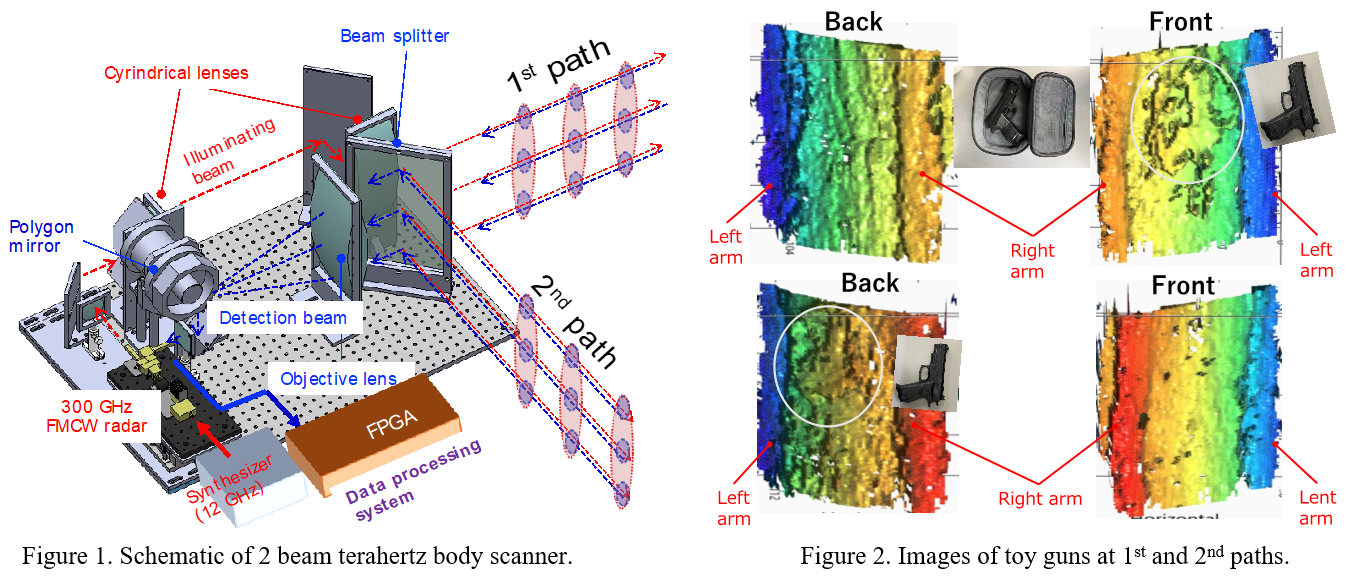| PREVIOUS PRESENTATION | BACK TO PROGRAM OVERVIEW | NEXT PRESENTATION |
Recent Progress of Terahertz Sensing
Chiko Otani1,2
1RIKEN Center for Advanced Photonics, RIKEN, Sendai, Japan
2Dept. Physics, Tohoku University, Sendai, Japan
In this presentation, I will present a few topics related to terahertz (THz) sensing. The first one is related to the development of THz absorber made by metal-plated Spirulina microcoils. Spirulina is a type of algae with a spiral shape, with a length of 40-300 µm and a helical inner diameter of 25-35 µm. Iyoda, Kamata et al. have applied 0.3 µm-thick metal plating to this and shown that it worked as a sort of functional material in the THz region [1]. Moreover, we have revealed its temporal response by THz-TDS and shown that it absorbed a broadband THz radiation and reemitted a part of the energy by axial and dipole mode radiation [2]. Here, I will present that it works as a phase-randomizing absorber with low reflection when we make it by including many microcoils in collaboration with PANAC Co. Ltd. In fact, the reflected temporal profiles by a single input pulse showed the combination of small multiple pulses. Moreover, the reflection signal was about about one order smaller than that of Eccosorb® (AN-72) that is a de facto standard absorber in THz region. These results suggest that this microcoil absorber can be a good absorber with phase-randomizing functionality and a good for future THz high-speed wireless telecommunication.
The 2nd topic is the further development of a walk-through body scanner. We have developed the imaging system by combining THz-band FMCW radar and a polygon mirror, and successfully visualized concealed objects of pedestrians at real walking speed [3]. However, for practical use, it is also necessary to enable measurement of the front and back using multiple units. In this presentation, we will show the simultaneous imaging of the front and back with the same optical unit using a double-path optical system. The system has two optical paths coaxialized by a beam splitter (Figure 1), and when a pedestrian passes through these optical paths, both the front and the back can be measured. Figure 2 shows the imaging results when the pedestrian held a toy gun in a bag underneath his clothes at the front and the back, respectively, showing that the simultaneous imaging has been achieved.

Acknowledgements
For the first work, CO thanks to his collaborators, Prof. T. Iyoda of Doshisha University, Mr. N. Kurahashi of Kyoto Prefectural Technology Center (KPTC), Dr. G. Satoh, Mr. Y. Kobori, Mr. M. Koide and Mr. T. Ohki. That work was also partially supported by Acquisition, Technology and Logistics Agency of Japanese Government. For the second work, CO thanks to Prof. T. Ikari of Nihon University and Dr. Y. Sasaki of RIKEN.
References
[1] K. Kamata, T. Iyoda, M. Hangyo et al. Sci. Rep. 4, 4919 (2014)
[2] T. Notake T. Iyoda, T. Arikawa, K. Tanaka, C. Otani, H. Minamide, Sci. Rep. 11, 3310 (2021)
[3] T. Ikari, Y, Sasaki, C, Otani, Photonics, 10, 343 (2023)
